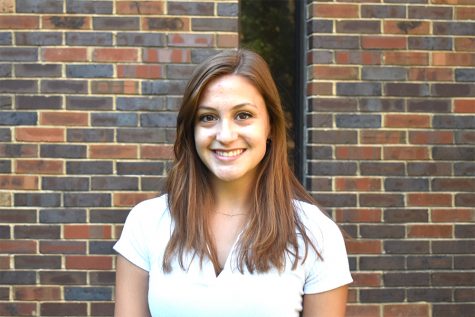As the U.S. transitions into the colder months, with a chill in the air and frost lining fields of grass, many Americans find the holiday season upon them again. Commercials advertise multitudes of gifts, families prepare to gather and many step into kitchens to produce traditional meals. Living in a multicultural nation means that Americans celebrate many different holidays all year round, especially in the winter. Below is a guide to some of the largest holiday season celebrations in the U.S.
Diwali
At the very beginning of the holiday season comes Diwali, the Hindu, Sikh and Jain festival of lights. Diwali usually takes place from mid October to mid November This year, Diwali was Nov. 14.
While Diwali can incorporate many different gods and their actions in Hinduism, junior Sahana Gujja remembers the actions of Rama, the seventh incarnation of the Hindu god Vishnu.
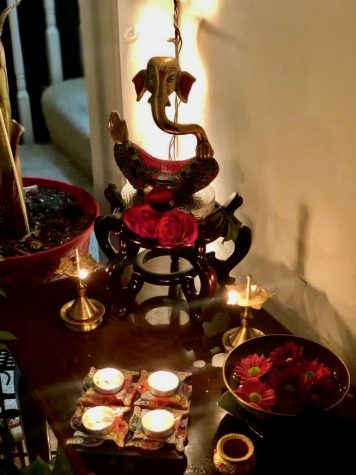
“This celebration isn’t a [very] traditional one because the other one’s are based on gods and celebrate gods, but this one is more of just a celebration,” Gujja said. “One of the gods defeated the evil Ravana. That’s why we celebrate Diwali, it’s a celebration of defeating evil.”
During Diwali, Hindus around the world partake in a celebration, which traditionally lasts five days during the Hindu month of Kartika. Many start by cleaning their homes or workplaces and then decorating.
“One of the main [celebrations] for Diwali is lighting up candles all over the house, like diyas,” Gujja said. “[We] make these Indian dessert sweets and fried foods, go to the temple, wear new clothes, traditional clothes. [I look forward to] the aspect of dressing up and cooking together.”
Gujja also takes part in the traditional Diwali practice of lighting firecrackers, which can represent many different things, like warding off evil spirits or a farewell to ancestral souls.
“In the evening, we burn firecrackers and meet up with families,” Gujja said. “In the beginning they burned the firecrackers because it was a way of welcoming Rama back when he came back to his kingdom.”
In the U.S., there are currently around 2.1 million Hindus. Based on America’s population of approximately 322 million people, Hindus make up about 0.7% of the population.
“Diwali is not that globally famous, but Hindu’s love celebrating Diwali so I wouldn’t say [other holidays] are overshadowing it,” Gujja said. “It’s one of the main holidays this time of year. I get to meet up with my family and celebrate. It’s something I look forward to.”
Hanukkah
Another festival of lights, the Jewish holiday of Hanukkah, begins on day 25 of the Jewish month of Kislev, which falls around late November to late December. This year, Hanukkah begins the evening of Dec. 10 and ends the evening of Dec. 18.
“It’s celebrating with family. Your whole family comes together and you celebrate as one,” junior Devyn Green said. “My grandparents come over and their family comes over, and we spend time with them and open gifts. It’s really fun.”
Hanukkah celebrates the recapture of the Second Temple in Jerusalem by Jews in the year 165 B.C.E. Though only enough oil was found to light the Temple, Jews celebrate that the oil lasted for eight days. Traditions of the holiday now include lighting a menorah, which is similar to a candle stand, with a special shamash candle.
“We say the Hanukkah blessing and we have some family over. It’s eight nights, and usually the oldest kid, me, lights the candle [that lights] all the [other] candles,” Green said. “I’ve been doing it since my first Hanukkah until now and it brings back a lot of memories.”
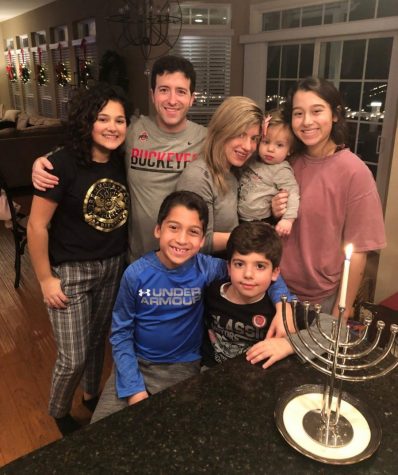
Other traditions of Hanukkah include playing the game of dreidel, which involves spinning a four-sided top inscribed with Hebrew letters Nun, Gimel, Hey or Chai and Shin. The letters form an acronym for the saying “a great miracle happened there,” which refers to the oil that lasted eight days. Those who celebrate eat traditional Jewish foods like latkes and sufganiyot as well, which are often oil-based. Many families, like Green’s, exchange money during Hanukkah.
“[My family] make[s] a Jewish meal, which is basically brisket, potato latkes, and my aunt makes this amazing mac and cheese, [and] we get a lot of cash,” Green said. “It’s honestly really cool to say that I’m Jewish because not a lot of people are.”
As of 2013, there are around 5.7 million religious Jews living in the U.S., which is about 1.8% of the population. The ratio of people who celebrate Christmas as opposed to Hanukkah is about 14 to 1. Green is part-Jewish, and celebrates with her mother’s family, attending the Jewish Community Center for youth group and Passover.
“You see all of the Christmas trees in public, in stores and everywhere. People don’t really talk about [Hanukkah], they just talk about Christmas and how everyone celebrates Christmas,” Green said. “[Hanukkah] is an important holiday and people do celebrate it, not as much as people celebrate Christmas, but it still needs to be talked about.”
Christmas
Even within the holiday of Christmas, which is celebrated culturally and/or religiously by 90% of Americans, there are several variations to how different sects of Christians celebrate. For many Orthodox Christians, Christmas is a little different than a Protestant or Catholic Christmas. Due to discrepancies in the switch from a Julian calendar to a Gregorian calendar, many Orthodox Christians, like in Russia, celebrate Christmas on Jan. 6 or Jan. 7.
Senior Stavros Humphrey, a Greek Orthodox, celebrates his Christmas on Dec. 25, the date most commonly associated with Christmas in America.
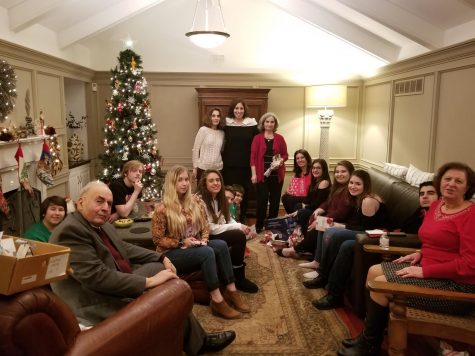
“Orthodox Christmas is very similar to Catholic Christmas in that we celebrate on Dec. 25, we have a Christmas tree,” Humphrey said. “The big difference for me is probably the food that we eat because my grandma makes all of the Greek foods. One of them is called melomakarona which is a honey cookie. It’s really good.”
Stavros attends Assumption Greek Orthodox church, but has not been able to attend church services in light of the outbreak of COVID-19. This year, all holiday celebrations will have to be altered due to restrictions placed on gatherings. In St. Louis County, private gatherings of more than 10 people are prohibited.
“Every year we have a giant Christmas party at our house and we invite the entire church. There could be like 60 people in our house,” Humphrey said. “We’re not going to have a party this year. My family and a couple other people, we might sit outside at a bonfire if the weather is not too bad. If it is we’ll probably just do it on Zoom.”
At church, priests in the Greek Orthodox church often adorn different colored vestments, or robes. On Christmas, white is worn in many places, while gold robes are worn from Christmas until Epiphany.
“We go to church before dinner, they have a little church service that [we go] to. For Orthodox [people], religion is a big part of our life,” Humphrey said. “Especially since COVID, we haven’t really been able to go to church as much as we normally do. So it’s going to be an important holiday to celebrate and we can’t forget the traditions that we normally do.”
While Orthodox Christmas will have to be different this year, Humphrey reflects on past years of celebration.
“It’s one of those holidays where you can be together with your family, and it’s not too hectic usually. You can just enjoy each other,” Humphrey said. “Especially now that my sister and a lot of my cousins are in college, you appreciate the family-time with them more.”
Currently, in the U.S., there are around 476,900 Greek Orthodox church attendees and one million Orthodox Christians in general. Comparatively, there are around 51 million Catholic adults and around 141 million Protestants living in America.
“I don’t think many people know much about [the differences between] Orthodox versus Catholic,” Humphrey said. “There’s not many differences in the way we celebrate Christmas, but I would say people overlook the smaller things we do differently in general.”
Kwanzaa
While many of the holidays celebrated around this time are based in religion, the cultural holiday of Kwanzaa is a secular holiday which celebrates African-American culture. Kwanzaa is celebrated Dec. 26 to Jan. 1.
Kwanzaa was created by Maulana Karenga, a professor of Africana studies, activist and author, as an alternative for African-Americans to the traditionally white-dominated holidays celebrated during the holiday season in the U.S. The holiday was first celebrated in 1966.
Kwanzaa lasts seven days, each being dedicated to a certain principle: Umoja (Unity), Kujichagulia (Self-Determination), Ujima (Collective Work and Responsibility), Ujamaa (Cooperative economics), Nia (Purpose), Kuumba (Creativity), Imani (Faith). These seven principles are also represented on the kinara, a candelabra lit for the holiday. At the end of Kwanzaa there is gift-giving and a feast of faith called Karamu Ya Imani.
While the popularity of Kwanzaa has decreased over the years, as of 2015, about six million people who were polled by the National Retail Foundation said they planned to celebrate Kwanzaa. It is estimated that around one to five percent of African-Americans celebrate Kwanzaa.
*The Pathfinder reached out to several sources, but was unable to connect with anyone who celebrates Kwanzaa. But, as Kwanzaa is a holiday celebrated by millions in America, we felt it was important to include in a winter holiday guide. If you or anyone you know celebrates Kwanzaa, please let us know. We would love to hear your thoughts!



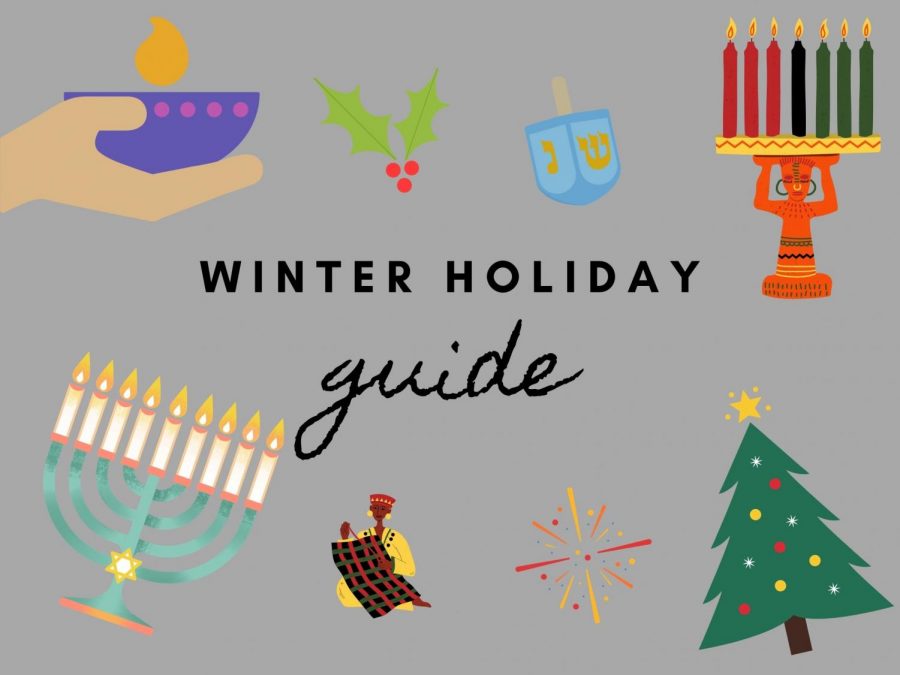
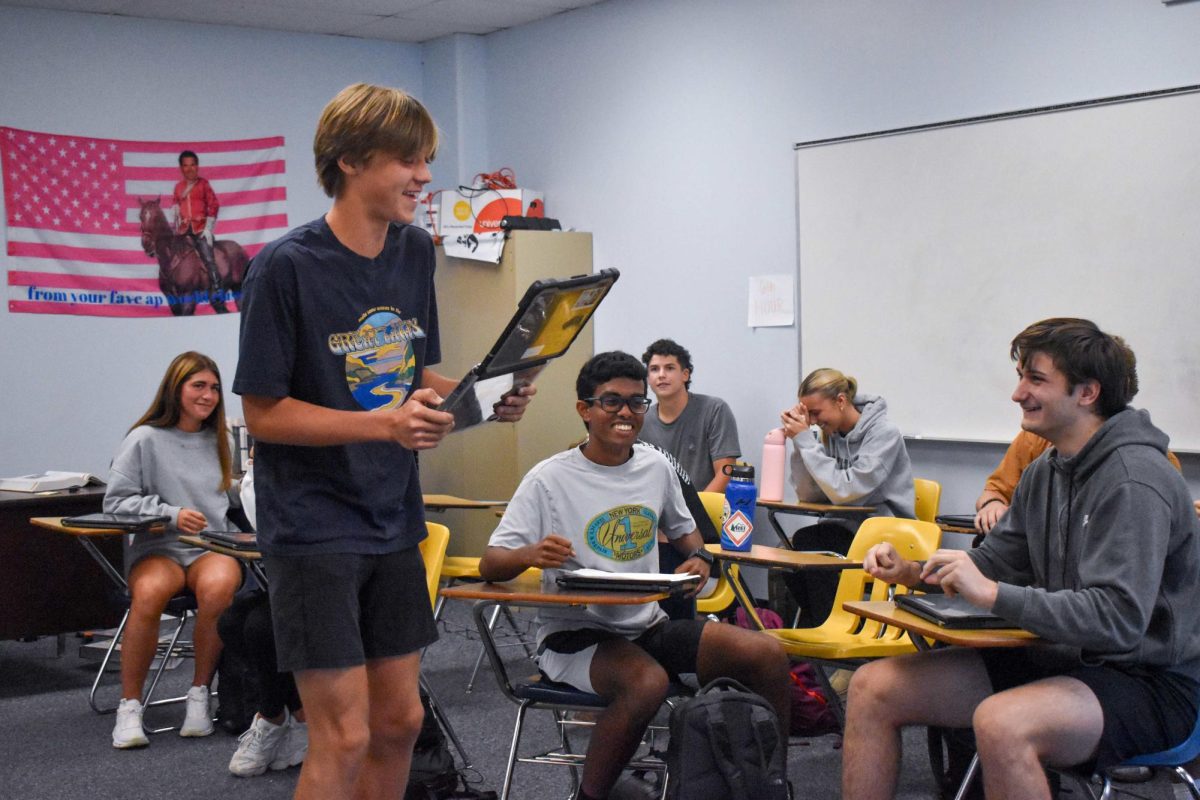
![Freshman Daphne Stokes looks at a table with Veterans Day flyers and information on Nov. 11. Stokes, along with other West High students, like senior Alexander Lewinski, passed by the table in the cafeteria with army recruitment information and giveaways for students to observe during lunch. “Talking with [the recruiters] has definitely helped me [find] where I wanted to go, more than anything else,” Lewinski said.](https://pwestpathfinder.com/wp-content/uploads/2025/11/DSC_1227-2-1200x800.jpg)
![Helping a customer, print room assistant Gretchen Williams operates her booth at the West High Craft Fair from Oct. 25-26. This was Williams’ first time participating in the Craft Fair with her new craft shop, Gs Beaded Boutique. “People have always said, over the years, ‘you should open something.’ [I replied that] I would rather just make [my crafts as] gifts for people. I just started [the online store] up, and it's been okay. I'm always surprised [by] how many views I get and [the] people from different states buying things; somebody from Alaska bought something the other day.”](https://pwestpathfinder.com/wp-content/uploads/2025/11/DSC0451-2-1200x799.jpg)
![Gesturing toward the club’s name on the board, Global Youth Aid co-president year Daniah Alsagheer discusses upcoming service projects with members during a meeting on Oct. 30. “We might be one club at one school, but together, we’re [part of] something much bigger,” Alsagheer said.](https://pwestpathfinder.com/wp-content/uploads/2025/11/DSC00949-1200x800.jpg)
![Focused on providing exceptional service, sophomore Darsh Mahapatra carefully cleans the door of a customer’s car. Mahapatra has always believed his customers deserve nothing less than the best. “[If] they’re trusting us with their car and our service, then I am convinced that they deserve our 100 percent effort and beyond,” Mahapatra said.](https://pwestpathfinder.com/wp-content/uploads/2025/10/DSC_0018-1200x800.jpg)
![Sophomore Aleix Pi de Cabanyes Navarro (left) finishes up a soccer game while junior Ava Muench (right) warms up for cross country practice. The two came to Parkway West High School as exchange students for the 2025-2026 school year. “The goal for the [exchange] program is to provide opportunities for both Parkway students and our international exchange students to learn about other cultures, build connections and become confident, capable, curious and caring — Parkway’s Four C’s — in the process,” Exchange Program Lead Lauren Farrelly said.](https://pwestpathfinder.com/wp-content/uploads/2025/10/Feature-Photo-1200x800.png)

![Gazing across the stage, sophomore Alexis Monteleone performs in the school theater. The Monteleone family’s band “Monte and the Machine” has been releasing music since 2012, but Alexis started her own solo career in 2024 with the release of her first single, Crying Skies. “My whole family is very musical, [and I especially] love writing [songs with them],” Monteleone said.](https://pwestpathfinder.com/wp-content/uploads/2025/09/DSC7463-1200x798.jpg)
![Amid teaching a lesson to her AP Calculus BC class, Kristin Judd jokes alongside her students in their funny remarks. Judd has always enjoyed keeping the mood light in her classroom, along with on the volleyball court. “[I enjoy] that side talk where you see [or] overhear a conversation and chime in, or somebody says something funny,” Judd said.](https://pwestpathfinder.com/wp-content/uploads/2025/09/image-1200x730.jpg)
![Eyeing the ball, junior Ella McNeal poses for her commitment pictures at Clemson University. McNeal’s commitment comes after months of contact with top Division 1 soccer programs. “ It has taken a lot to get to where I am, but I know that [what] I've already been through is just the beginning, and I can't wait for what is to come,” McNeal said.](https://pwestpathfinder.com/wp-content/uploads/2025/09/IMG_4926-1200x900.jpeg)
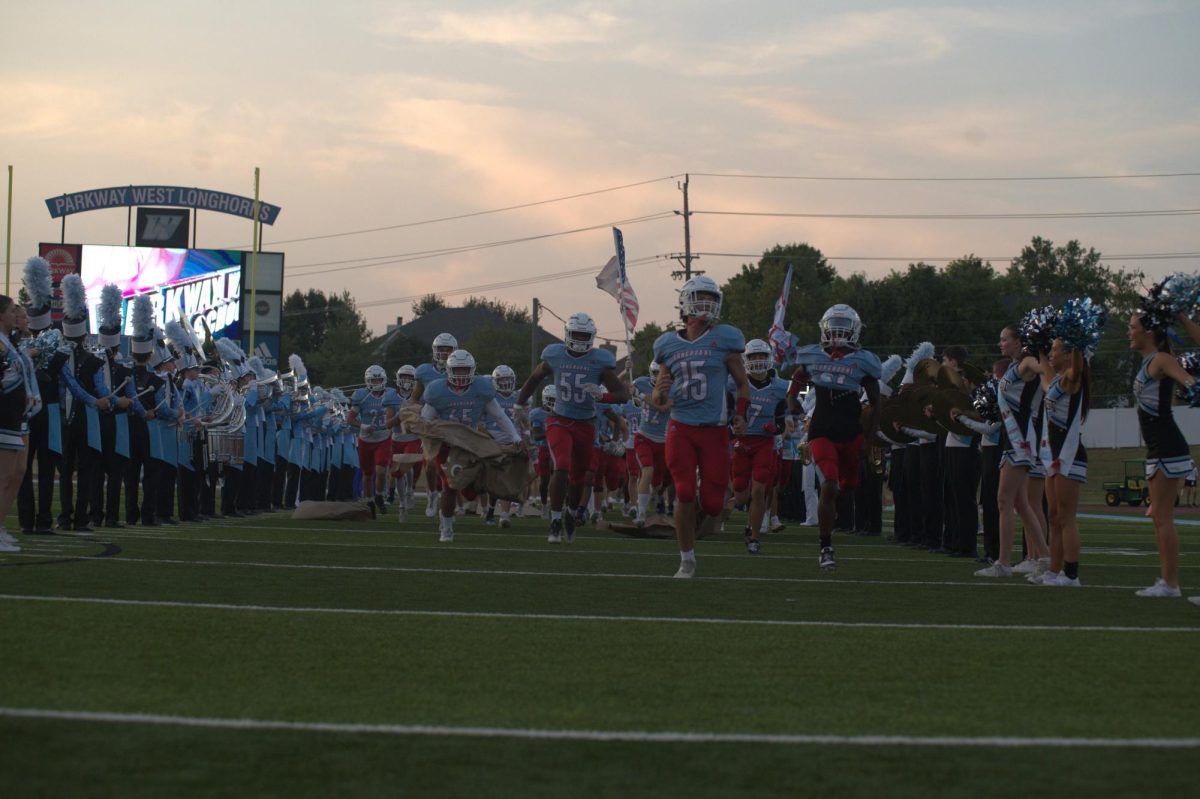
![Sophomore Shree Sikkal Kumar serves the ball across the court in a match against Lindbergh. Sikkal Kumar has been a varsity member of the varsity girls’ tennis team for two years, helping her earn the number two rank in Class 2 District 2.“When matches are close, it’s easy to get nervous, but I [ground] myself by[staying] confident and ready to play,” Sikkal Kumar said.](https://pwestpathfinder.com/wp-content/uploads/2025/11/DSC2801-1200x798.jpg)
![Dressed up as the varsity girls’ tennis coach Katelyn Arenos, senior Kate Johnson and junior Mireya David hand out candy at West High’s annual trunk or treat event. This year, the trunk or treat was moved inside as a result of adverse weather. “As a senior, I care less about Halloween now. Teachers will bring their kids and families [to West’s Trunk or Treat], but there were fewer [this year] because they just thought it was canceled [due to the] rain. [With] Halloween, I think you care less the older you get,” Johnson said.](https://pwestpathfinder.com/wp-content/uploads/2025/10/DSC00892-1-1200x800.jpg)
![Leaning on the podium, superintendent Melissa Schneider speaks to Parkway journalism students during a press conference. Schneider joined Parkway in July after working in the Thompson School District in Colorado. “My plan [to bond with students] is to get things on my calendar as much as possible. For example, being in [classes] is very special to me. I am trying to be opportunistic [meeting] kids [and] being in [the school] buildings. I have all the sports schedules and the fine arts schedules on my calendar, so that when I'm available, I can get to them,” Schneider said.](https://pwestpathfinder.com/wp-content/uploads/2025/09/IMG_5425-1200x943.jpeg)

![Leaping through the air, senior Tyler Watts celebrates his first goal of the season, which put the Longhorns up 1-0 against the Lafayette Lancers. Watts decided to play soccer for West for his last year of high school and secured a spot on the varsity roster. “[Playing soccer for West] is something I had always dreamed of, but hadn’t really had a good opportunity to do until now. It’s [really] fun being out [on the field], and I’m glad I decided to join the team. It’s just all about having fun with the boys and enjoying what time we have left together,” Watts said.](https://pwestpathfinder.com/wp-content/uploads/2025/09/DSC_1951-1200x855.jpg)

![Shifting global trade, President Donald Trump’s tariffs are raising concerns about economic stability for the U.S. and other countries alike. “[The tariffs are] going to pose a distinct challenge to the U.S. economy and a challenge to the global economy on the whole because it's going to greatly upset who trades with who and where resources and products are going to come from,” social studies teacher Melvin Trotier said.](https://pwestpathfinder.com/wp-content/uploads/2025/05/MDB_3456-1200x800.jpg)

![Pitching the ball on Apr. 14, senior Henry Wild and his team play against Belleville East. Wild was named scholar athlete of the year by St. Louis Post-Dispatch after maintaining a high cumulative GPA and staying involved with athletics for all of high school. “It’s an amazing honor. I feel very blessed to have the opportunity to represent my school [and] what [it] stands for,” Wild said.](https://pwestpathfinder.com/wp-content/uploads/2025/05/unnamed-6-1200x714.jpg)
